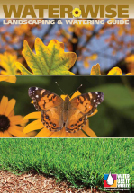|
|
Irrigating with Ease and Efficiency With a Drip Watering SystemThat’s a lot of waste in an age where we need to conserve our natural resources. Drip systems, on the other hand, typically operate at 90 percent efficiency and sometimes even higher. The drip method of irrigation, developed in arid countries such as Israel, is now the preferred method in the U.S. state of Arizona. Besides the benefits in resource conservation, drip irrigation has other positive characteristics, ones that make it a preferred choice of watering by many gardeners around the world. For example, the drip irrigation system is made for easy installation. It can prevent the diseases and prolific weed growth associated with uncontrolled over-watering. Plus, it is inexpensive. The drip watering system is a wonderful choice for watering your garden. The methods of drip irrigation also known as trickle irrigation are based on slow steady streams of water that seep directly into the soil. The effect that drip irrigation has on your garden or lawn is two-fold. The water is released directly into the soil, thus eliminating evaporation, and this in turn allows 90 percent or more of the water to reach its destination. Conversely, the common spraying technique sends water everywhere. Drip irrigation systems can handle a large margin of error in design and will reach the roots even if you didn’t do so well on the drawing board or with installing. However, you need to do a few things in order to ensure that you get the maximum effect from your irrigation system. Also, there are some common problems you should be aware of so that you do not waste any time in giving your garden the watering it needs. You can use almost any valves in your system as long as you ensure that they are back-flow protected. With any drip system, you must use a back flow protector to ensure positive fluid flow. You need to be sure that you are using a pressure regulator inline that can bring the pressure to 40 PSI. You must always use a filter in your system so that the tiny inline holes used to distribute the water are not plugged. Your emitter should pump at about 1 gallon per hour to for the desirable slow flow. Do not bury your drip tubing because doing so will make it an attractive chew toy to rodents. Also make sure that any adaptors and fittings that you employ are the exact size necessary. Remember the point of this exercise is to conserve. If you use these tips and follow one of the many good online tutorials, you will have a drip system that will efficiently water your garden for years. For more information on different watering systems, please read these articles: How to install a drip irrigation system. Description of the four different types of irrigation tubing. |
|
||||||||||
|
||||||||||||
|
|
||||||||||||



